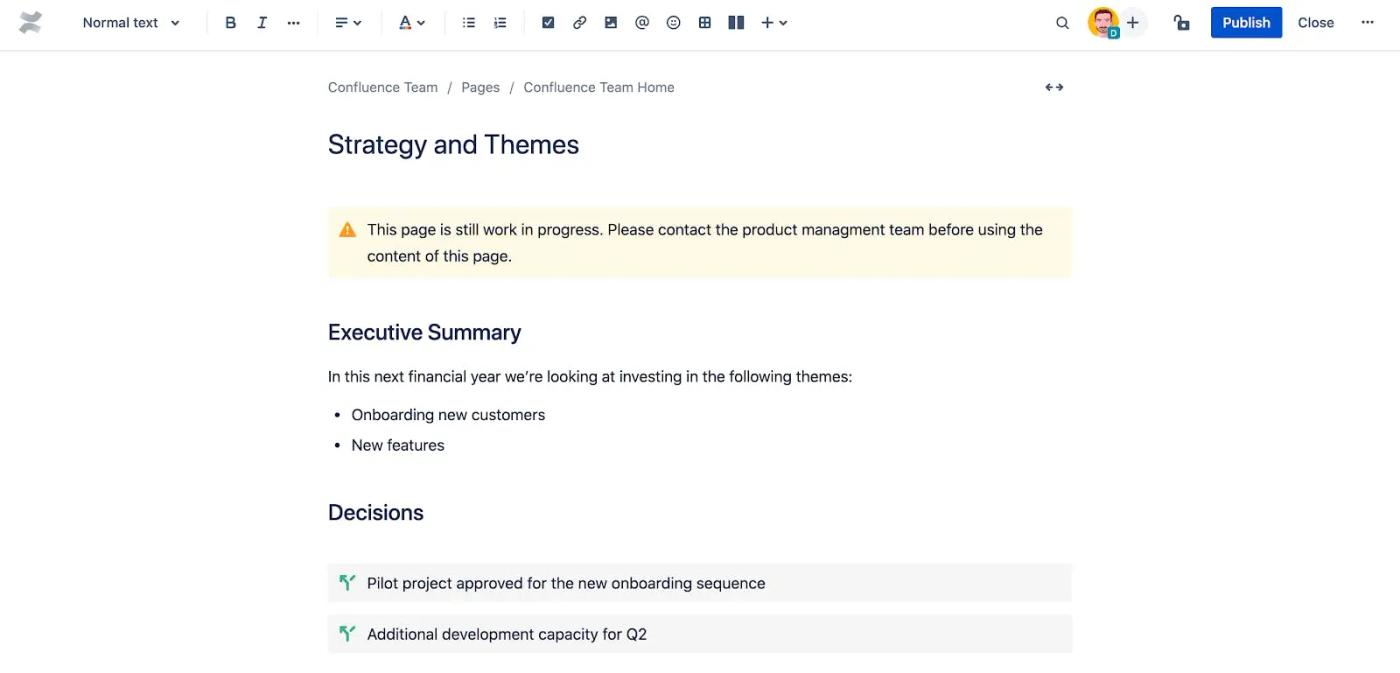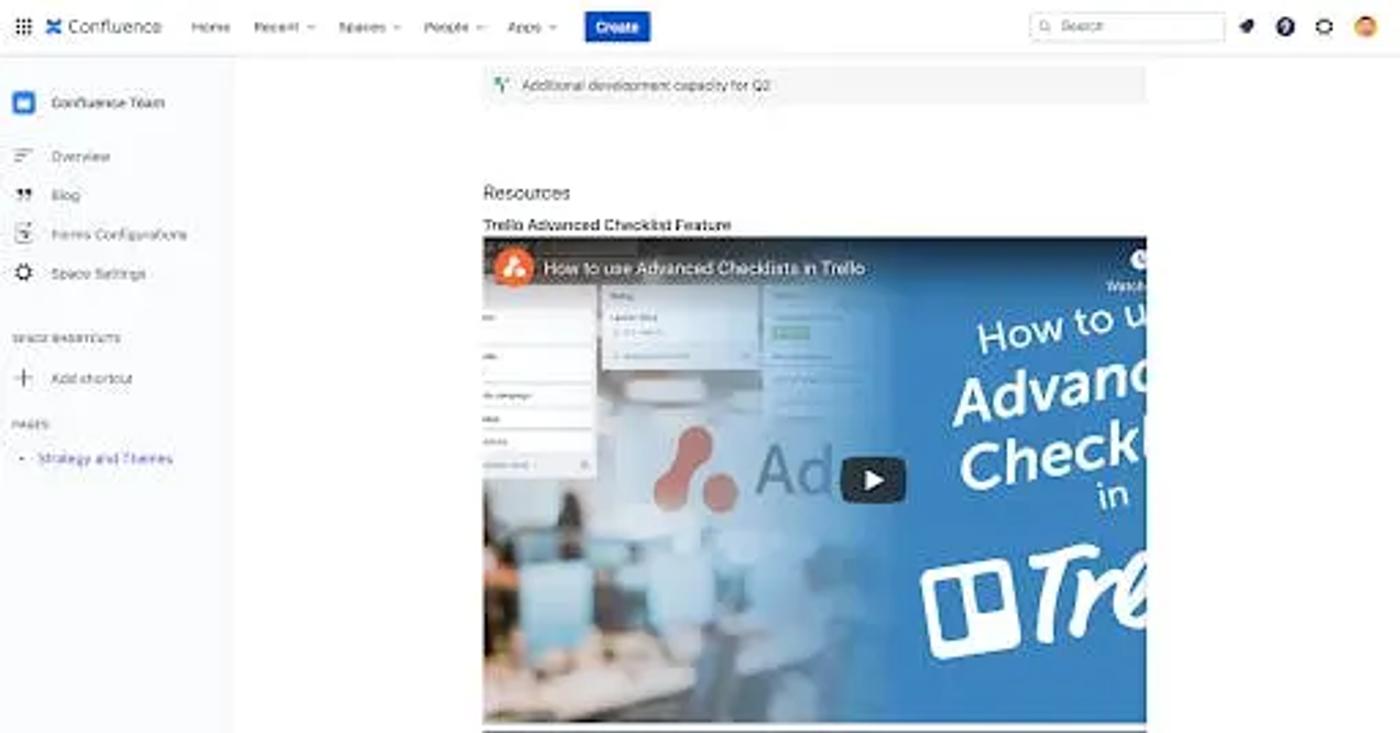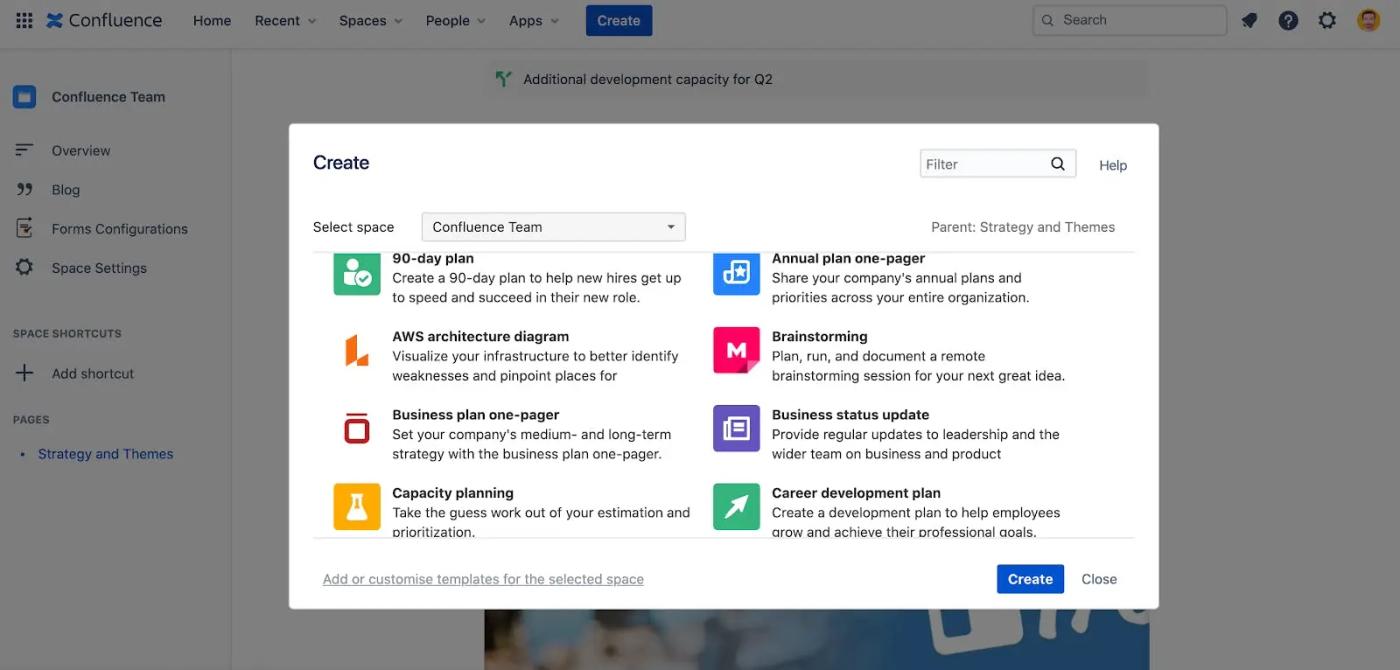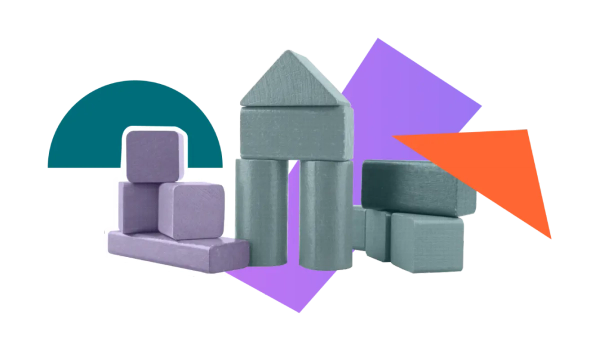How to create more meaningful content in Confluence Cloud
Share on socials
How to create more meaningful content in Confluence Cloud

Dylan Lindsay
10th May, 2021


Dylan Lindsay
10th May, 2021
How do you create better and more engaging content for your team in Confluence Cloud? Our guide makes it easy.
The way we communicate has changed significantly in the past three years. With lockdown restrictions in response to COVID-19, instant messaging, video conferencing and documentation tools have become mission critical for keeping teams aligned, collaborative, and productive.
Atlassian’s overhaul of how Confluence cloud looks and feels, coupled with its integrations, have really set all teams up for success by making it more accessible than ever before.
Whether you're new to Confluence or have hundreds of pages under your belt, how do you create better and more engaging content for your team?
Focus your Confluence content
One of the most visible changes in the past two years is the introduction of the new Confluence page layout and editing experience. This new content experience has had a particular focus on making content the hero - that is, making content easier to create and consume.
The days of having Confluence content look lost on a wide page are over. Now, by default, the page layout is centred with lots of padding around it, drawing attention to your content. While this will get your reader’s focus, it also makes it easier to slip into creating lengthy content that can just as easily reduce focus. Here are a few suggestions to keep your audience engaged:
Call out important content
Confluence cloud has made it really easy to call out important content with built-in macros. You can highlight decisions, call out warnings or important notes for your reader and generally avoid the missteps of assuming that the reader will interpret the most important points of your arguments.

Make your mark with media
Images are important. After all, 65% of the population are visual learners. Luckily, it’s now easier to manipulate the size and positioning of images in Confluence, allowing you to embed them into your content. The widget connector also makes it easy to add other rich media like videos from Youtube or Vimeo to your content.

Improved focus with apps
The Atlassian marketplace has recently seen an explosion of apps that are offering an even more powerful content experience on cloud. Our app, Content Formatting Macros for Confluence, introduces tabs, allowing you to drastically cut back on page length and allow you to focus your readers’ attention on specific themes.
Introducing the Tabs macro
Looking for more tips? Discover new ways to improve your Confluence with Content Formatting Macros in this blog, or read more on how to delete pages in Confluence and other formatting tips.
Makes templates of everything
One of the most valuable things you can do for your reader is to create a repeatable content structure. When your audience knows where to look for the information that's most important to them, they’ll be more efficient in consuming it and you’ll get your point across more clearly.
Confluence page templates allow you to do just that. The recent expansion to include Confluence templates like Hubspot Creative Briefs, Mural Brainstorming pages and team plays from Atlassian’s team playbooks series have given your teams an even easier way to get started creating more powerful content.
Don’t agonise over creating the perfect Confluence page template
One common misstep is when Confluence page templates become completely static. A template, like most content, should be a living piece of work that’s updated over time to accommodate the message you’re trying to get across. Confluence templates get abandoned when they’re not easy to use or make users complete fields that aren’t mission critical. The remedy to this is often not to agonise over creating a ‘perfect’ template and instead to allow for revisions over time to encourage your team to communicate content effectively.

Boost productivity by syncing your content across multiple communication tools
Adaptavist's recent digital etiquette study surveyed over 2800 global knowledge workers on what some of the biggest challenges were in getting work done in a completely digital world. One of the key findings of the study was that the inefficient use of digital channels was increasing the complexity of tasks and threatening productivity. So, how can we counter this trend with Confluence?
Integrate mission-critical tools
A significant portion of survey respondents said that they spent a considerable amount of time going between different tools, attempting to find relevant information. Some of the improvements that the team over at Atlassian have been hard at work on are integrations with their other products and third-party apps.
Confluence and Slack integration
Atlassian users may find themselves going back and forth between Slack and Confluence fairly regularly. If you’re a team that’s focused on creating content in Confluence then you might want to consider setting up a few automations in Slack that will reduce this kind of tool switching.
Take a look at Atlassian’s blog for more details on how to set this up.
In Slack, you can set up a notification that will message you about changes to important pages in a Confluence space ensuring that you navigate to important content quickly. You can also set up an automation that will allow you to respond to comments inside of Slack, keeping you focussed.
Trello integration with Confluence
Work often starts out as ideas or suggestions on a Trello board. If this sounds familiar to you, then consider bringing your Trello content into Confluence.
You can choose to display a single Trello card that will allow a reader to easily get more context about your topic or navigate to that card directly showing all of its detail. You can also choose to add an entire board to a Confluence page, which can be useful if you’re running retrospectives on Trello and want to explore any of the topics raised.
If your team finds that they work more in Trello then you can also add the Confluence Power-up to Trello, link pages to cards, and comment directly on pages from Trello simplifying tool switching further.
Confluence and Jira integration
Confluence and Jira has always been a classic integration but one that’s popular for a reason. The ability to link a work-tracking tool like Jira to Confluence has helped teams across different verticals to achieve success and communicate the progress of initiatives.
Being able to visualise the state that work is in and to easily navigate to work in progress from Confluence saves teams a huge amount of time. Equally linking a page to a Jira ticket allows for teams that are Jira centric, like developers, to easily navigate to a Confluence page to get more context.
Iframes for anything else!
If you want to integrate one of your other tools into your Confluence content but can’t find a built-in feature or an app for it on the Atlassian Marketplace, consider making use of Confluence’s Iframe feature. This feature allows you to embed a fully functional web page in the content that you’re creating, meaning that the reader of your content or your team doesn’t have to navigate away through a link to get more context.
Create content that wants to be consumed
As we continue to move forward in this evolving remote working world, it’s important to focus on our audiences and create Confluence content that’s easier to consume. By integrating existing tools, focussing content, and creating flexible templates we can drive towards making more engaging content.
Create better content with Content Formatting Macros
Feeling inspired? Start putting your knowledge into action with Content Formatting Macros for Confluence Cloud. You can try it now for free!
Written by

Dylan Lindsay
Lead Product Manager
With a wealth of experience in product marketing and product management, Dylan oversees Kolekti's entire portfolio of Confluence apps. He's passionate about solutions that improve how teams communicate, hiking, and all things archaeology.
LinkedIn →
LinkedIn →
Confluence
Content Formatting



